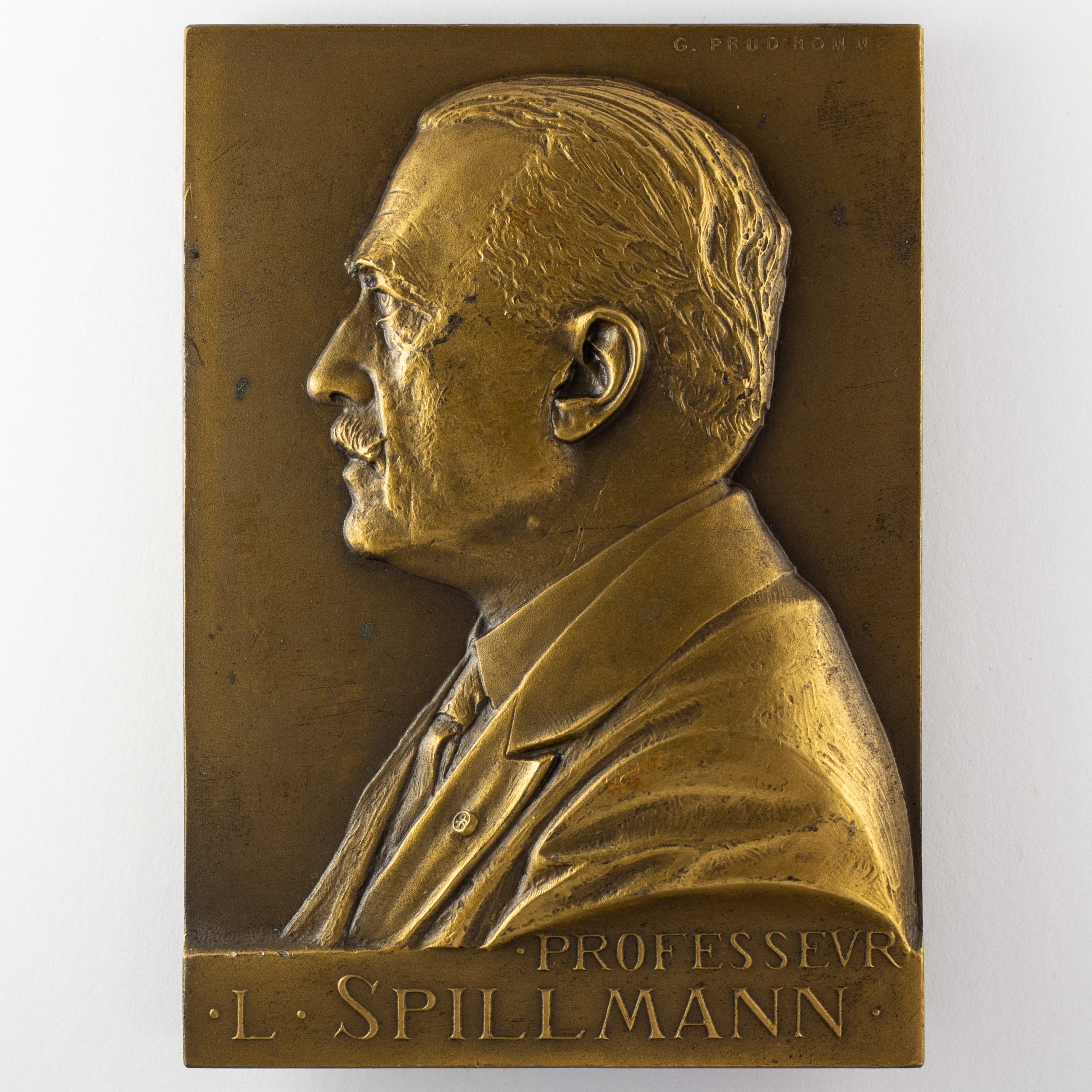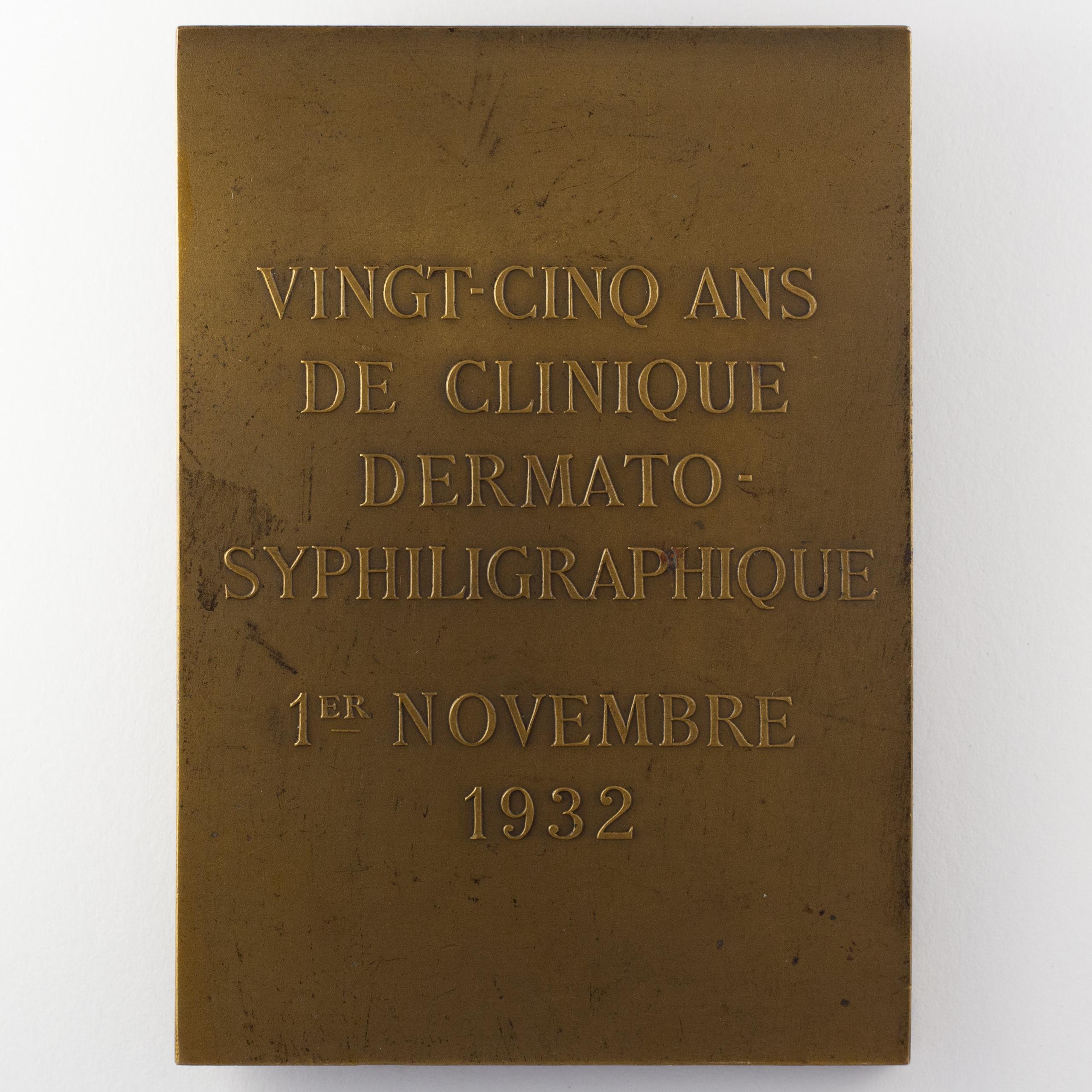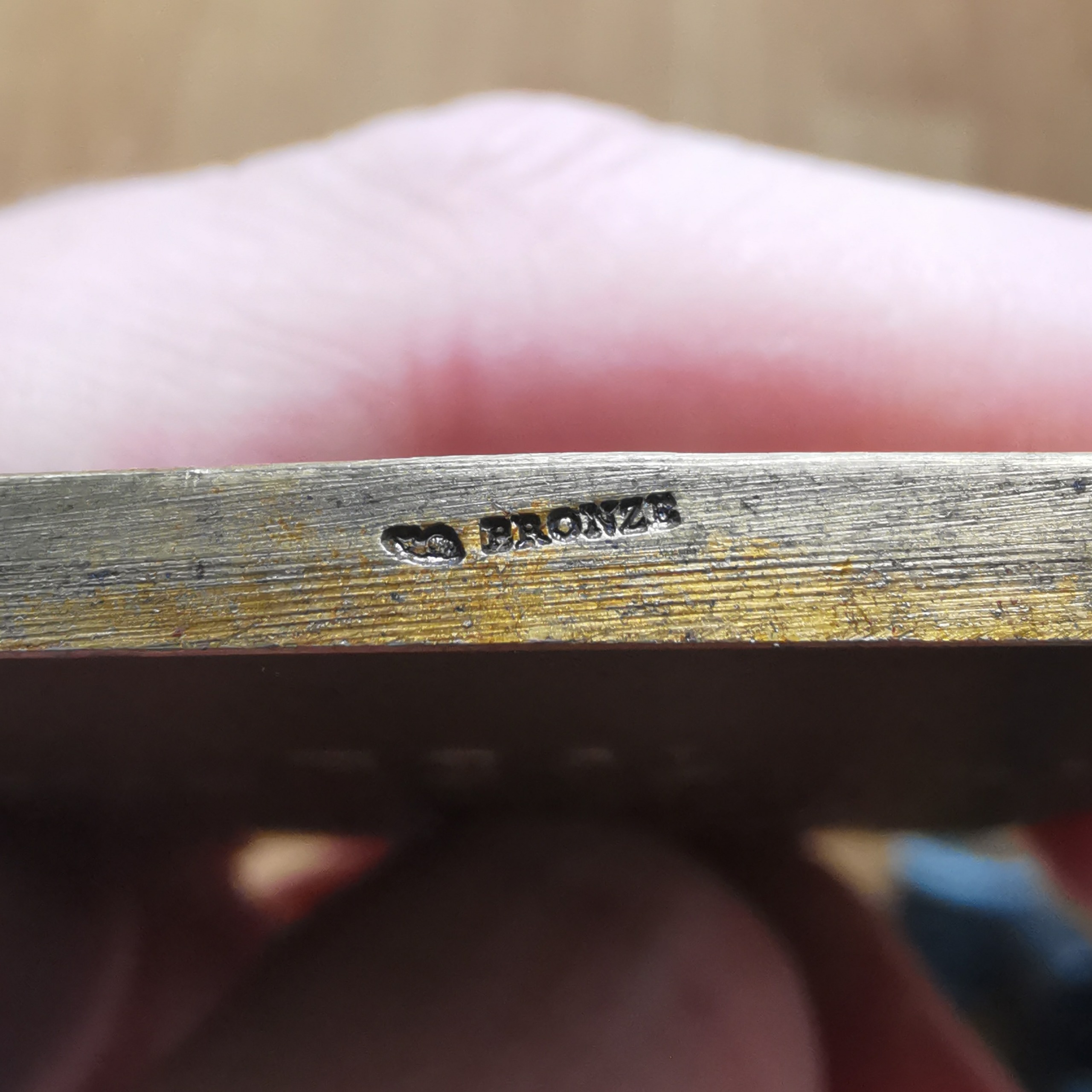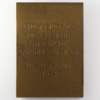Professor Louis Spillmann Medal – Nancy – Signed by Georges-Henri Prud’homme
-10% sur votre première commande avec le code BIENVENUE10
In bronze
Weight: 131.9 g
Dimensions: 53.5 x 75.5 mm
Biography :
Text taken from “La dermatologie” by J. BEUREY – Special Issue of the Centenary of the Review (1874-1974) Annales Médicales de Nancy
In 1908 finally began the period when dermatology in Nancy was conducted by doctors who devoted their careers exclusively to it. The first in date was Louis Spillmann (son of Paul Spillmann). A hospital intern in 1896, head of clinic in 1900, he was accepted in 1901 in the competitive examination for aggregation (section of Medicine and Legal Medicine). His work was first of all that of a general practitioner, concerning neurology, infectious pathology, tuberculosis. One of his publications, on “the use of X-rays in splenic leukemia”, in 1904, testifies to an avant-garde spirit, open to new techniques. His extensive culture, his ability to take a broad and complete view of medical problems would be of great use to him when he was entrusted, on November 1, 1907, with the old service of the Maison de Secours. His conception of his new assignment, he himself would later condense it into a single sentence, which some of his contemporaries would have done well to draw inspiration from, because it already defines the rule that remains golden for modern dermatology: “Dermatology is a very special branch of medicine, a branch whose study can only be undertaken after having acquired in general medicine, both in the hospital and in the laboratory, the knowledge essential to clinical and experimental research that is often laborious, but always of high scientific interest.” From the outset, the new incumbent showed remarkable qualities as an organizer. It is true that the department, whose premises are of a distressing mediocrity, has the greatest need of it: almost exclusively frequented by venereal disease and the poor, it has a single room for consultations, treatments and laboratory examinations, the corridor serving as a waiting room; As for the hospital premises, poorly lit and poorly ventilated, they were of an appearance likely to discourage both doctors and unfortunate patients. The transfer of this dilapidated complex in April 1914 to the former Sacré-Coeur convent, which had become the Hippolyte-Maringer Hospital, was therefore welcomed with relief. In the meantime, Louis Spillmann had opted for an exclusively dermatological career, and his efforts would increasingly focus on syphiligraphy and the fight against venereal disease.
A consulting physician to the Eighth Army during the 1914-1918 war, he gave numerous lectures and wrote on the “venereal peril” for the military. In 1919, he was appointed to the chair of Syphilitic and Cutaneous Diseases, founded on March 24, and his inaugural lecture included a whole program of research, teaching and medical ethics. Six years later, he successfully completed the construction of the Alfred-Fournier Dispensary, which already included a real amphitheatre and whose name was also given to the hospital department, which was now distinct from the Maringer Hospital: there, he set up an entire medical-social system, the aim of which was the treatment and monitoring of syphilitics, as well as the screening of contaminated subjects – all objectives which were then on the agenda and whose importance can only be understood today if we are willing to imagine the social conditions of that time, the ignorance of the public, the absence of any screening organisation, the worrying resurgence of venereal diseases at the end of the war, the frequent inadequacy of therapeutic means… Thus Louis Spillmann ended up having the instrument which would allow him to accomplish the task to which he had dedicated himself, all the more so since the deanship was opened to him in 1926, making the Fournier Hospital a university strategy center. It is even legitimate to say that by organizing the anti-venereal defense in Lorraine he is one of those who played a capital role in France in the fight against this disease which, in the context of the time, deserved its name of “syphilitic scourge”.
Obverse:
Profile bust to the left of Professor Louis Spillman.
At the bottom:
• PROFESSEVR •
• L • SPILLMANN •
Signature: G. PRUD’HOMME
Reverse:
Inscription on six lines:
VINGT-CINQ ANS
DE CLINIQUE
DERMATO-
SYPHILIGRAPHIQUE
1ER NOVEMBRE
1932
Edge:
Cornucopia hallmark (Paris Mint) + BRONZE
| Graveur | |
|---|---|
| Fabricant | |
| Matière | |
| Size (in mm) | |
| Weight (in g) | |
| Theme | |
| Époque |
SKU: 20240201020
Category: Medals

















